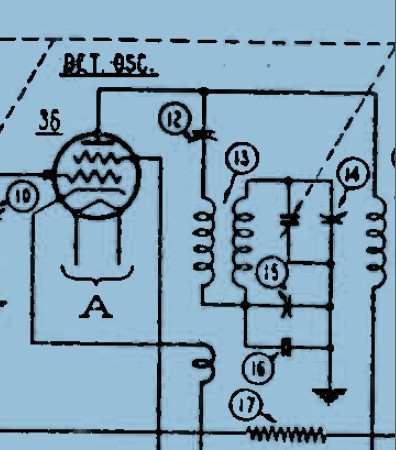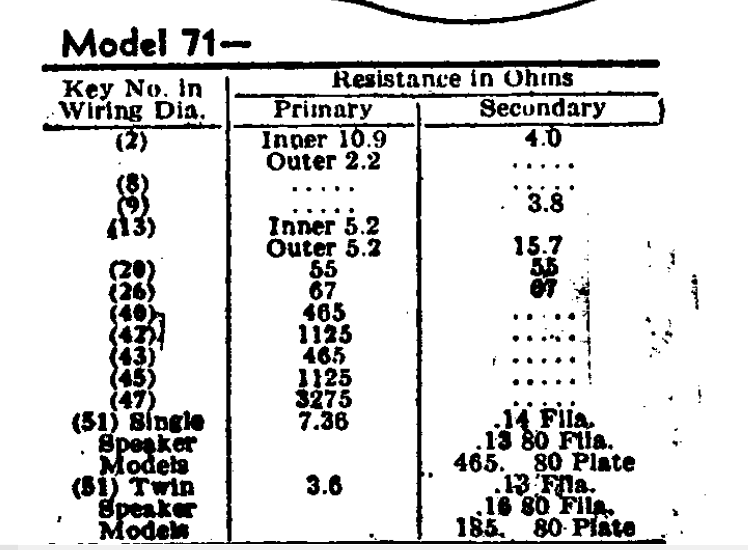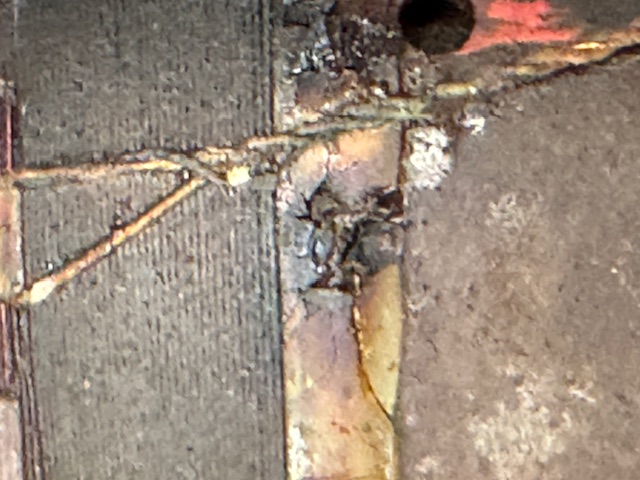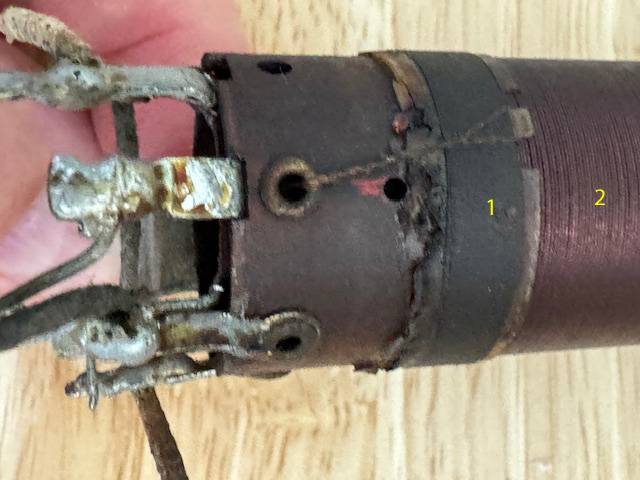Restoring a Philco 71 Code 121-No sound
Posts: 23
Threads: 3
Joined: Feb 2021
City: Durham
State, Province, Country: NC
This radio has an inoperative On-Off switch. I jumpered a bypass on the switch to allow the radio to power on. Voltages are about 10% above spec on the plates and within spec on the screen grids. Filament voltages are spot on. All tubes have been tested OK. Filaments and dial light are lit. My line voltage is 115 volts AC but when I measure the voltage on P/N 49 (the Bakelite block that encloses 2 x 0.015 safety capacitors [I just replaced these within the block after removing the contents], I am getting a 55.6 volt reading on the side leg that connects to the On-Off switch. Also, there is no sound at all (even static or hum) coming out of the speaker. Incidentally, another 71-B that I rebuilt has the same voltage on the Bakelite leg as the line voltage.
Could this be an issue with the transformer ?
Posts: 16,533
Threads: 573
Joined: Oct 2011
City: Jackson
State, Province, Country: NJ
One thing you should not be interested in is that very reading on the C49.
What you reading is, well, the 115VAC divided by two by your capacitors. If you tried to read it relative to the chassis.
Proceed with the essential stuff; this is just unimportant.
Your xfmr is fine and your readings that are 10% up are fine.
People who do not drink, do not smoke, do not eat red meat will one day feel really stupid lying there and dying from nothing.
Posts: 23
Threads: 3
Joined: Feb 2021
City: Durham
State, Province, Country: NC
I started looking at the oscillator coil (P/N 13) and according to the ohms readings found what I suspect is an open coil.
Readings are as follows:
Between pins 2 and 5 : 9.3 ohms
Between pins 1 and 3 : 6.6 ohms
Between pins 4 and 5 : 5.2 ohms
Between pins 2 and 4 : 4.5 ohms
Between pins 3 and 5 : 0 ohms (open ?)
Note: pins are numbered clockwise 1 to 5 from the top (12 o'clock) position mounting bracket
The chart for the reference ohms resistances list the following:
Primary (inner) : 5.2 ohms
Primary (outer) : 5.2 ohms
Secondary (outer) : 15.7 ohms
I'm thinking the open circuit is the secondary if I'm reading the schematic correctly.
Question: Which coil should I attempt to rewind and can someone tell me how to find the beginning and the end connections of such coil ?
Posts: 23
Threads: 3
Joined: Feb 2021
City: Durham
State, Province, Country: NC
Screenshot of Philco 71 Oscillator Coil (P/N 13) from Rider's

Posts: 23
Threads: 3
Joined: Feb 2021
City: Durham
State, Province, Country: NC
Posts: 23
Threads: 3
Joined: Feb 2021
City: Durham
State, Province, Country: NC
Philco Model 71 Transformer/Coil Resistance Ohms Data

Posts: 714
Threads: 9
Joined: Apr 2018
City: S. Dartmouth
State, Province, Country: MA
One can apply this to most any RF/IFoscilator coil:
If the resistance given is any more than 10% high using an analog ohmmeter then there is corrosion present and some of the turns have been etched. Often seen as tiny green spots. Such a coil may still work...
Coils that have a layer separated with what appears to be plastic, it is actually celluloid, are always suspect. In moisture/time celluloid breakdown and creates an acid. Thus etching the turns despite the enamel..
The coil will either have to be replaced or re-wound.
To re-wind, using solvent and or heat remove all the surface wax. The start/finish of the turns can be found.
I suggest creating a diagram of the coil so all notes of how it is wound are present on the diagram.. Measure the O.D. of the magnet wires and refer to a chart to determine what size magnet wire to use. Do NOT change the wire size or the number/direction of the turns.
>>> If a coil is rewound exactly as it was, it will work with very little or no alignment required. Use magnification, count the turns. Then, unwind, counting turns a second time
Clean the form, then dip in melted bees wax and let sit for a few minutes. then remove the form, it will have a wax film on it which will aid greatly in the rewind. Follow the diagram and rewind. Kapton tape can replace the rotting celluloid liner. Coat the surface of the tape or dip in wax to make the form sticky again. Wind the top layer. Dip the entire coil in bees wax and let sit, when most bubbles have gone extract from wax and let cool. The, dip very quickly to make thick film of wax, coil is now ready to back into radio.
Use only clean bees-wax not paraffin or a candle blend. Paraffin is slippery not sticky... If there are any tags of black adhesive holding the magnet wire, that, is a production wax that melts at a higher temperature. generally that black wax does not have to be replicated as one is hand winding.
The advantage of the wax and the diagram is one can take a break from the winding and the coils will not slip off and the the process not forgotten as it is on paper.
GL
Chas
Pliny the younger
“nihil novum nihil varium nihil quod non semel spectasse sufficiat”
Posts: 23
Threads: 3
Joined: Feb 2021
City: Durham
State, Province, Country: NC
Thank you for these very thorough instructions Chas. In your opinion should I rewind just the outer core top and bottom and leave the inner core intact ?
Also, which sections correspond to the primary and secondary windings ?
Posts: 16,533
Threads: 573
Joined: Oct 2011
City: Jackson
State, Province, Country: NJ
>> Between pins 3 and 5 : 0 ohms (open ?)
0 Ohms is shorted.
The lower winding seems charred?
People who do not drink, do not smoke, do not eat red meat will one day feel really stupid lying there and dying from nothing.
Posts: 23
Threads: 3
Joined: Feb 2021
City: Durham
State, Province, Country: NC
Here are some more close-ups of the Lug 5 vicinity. Appears to be a burnt out spot on the lower winding. Also, you can see it appears to have three strands of magnet wire descending to the lug. Is the lower band considered the "tickler" and the windings directly beneath that the secondary winding ? I have not been able to find a diagram to differentiate primary vs secondary, tickler, etc. , inner vs outer core.


Posts: 714
Threads: 9
Joined: Apr 2018
City: S. Dartmouth
State, Province, Country: MA
That is the “burnt” look is the Celluloid decomposing.
Once the coil/form are cleaned with solvent the condition of the coil can be examined any tiny green spots are nitric acid corrosion. The coil will have to be rewound.
Mineral spirits or alcohol.
Chas
Pliny the younger
“nihil novum nihil varium nihil quod non semel spectasse sufficiat”
Posts: 23
Threads: 3
Joined: Feb 2021
City: Durham
State, Province, Country: NC
May I ask if anyone can identify the components numbered 1 and 2 in the photo. I'm trying to determine the order of removal and replacement of the coil windings.
Thank you

Posts: 16,533
Threads: 573
Joined: Oct 2011
City: Jackson
State, Province, Country: NJ
Why remove the 2?
People who do not drink, do not smoke, do not eat red meat will one day feel really stupid lying there and dying from nothing.
Posts: 23
Threads: 3
Joined: Feb 2021
City: Durham
State, Province, Country: NC
My guess is that the 3 to 5 is the secondary and it is open according to my readings but I do not actually know which of these is the secondary winding. Haven't been able to see any diagrams as to which is which. Is the small band (#1) the secondary winding ?
Posts: 16,533
Threads: 573
Joined: Oct 2011
City: Jackson
State, Province, Country: NJ
In RF interrstage transformers the small one is typically the plate load, that is the primary.
People who do not drink, do not smoke, do not eat red meat will one day feel really stupid lying there and dying from nothing.
Users browsing this thread: 1 Guest(s)
|
|
Recent Posts
|
|
Model 80 Antenna Issue?
|
| Thanks Gary and Rod.
I also found an article in the Philco Repair Bench under Service Hints and Tips, about installi...Hamilton — 12:32 PM |
|
Model 80 Antenna Issue?
|
| Hello Hamilton, here is a little information found in our Philco Radio Library at the bottom of the Home page. Hope it ...GarySP — 11:28 AM |
|
Model 80 Antenna Issue?
|
| I did as you suggested and touching the middle of the volume control did nothing so the coil has to be rewound. Any idea...Hamilton — 10:19 AM |
|
1949 Motorola 5A9M
|
| This would be the second portable in the "other radios" forum where I have a similar one in my collection. I h...Arran — 12:41 AM |
|
Looking for any info: 1977 Ford-Philco Console Hi-Fi Turntable and Radio
|
| Hi PittsburgTost.
The record changer looks like a Garrard or BSR (Likely Garrard). The spindles just pull out and pu...MrFixr55 — 11:57 PM |
|
Looking for any info: 1977 Ford-Philco Console Hi-Fi Turntable and Radio
|
| Hello PittsburghToast ,
Welcome aboard and it looks like gary may have something for you !
now if I dig through my se...radiorich — 11:35 PM |
|
Model 80 Antenna Issue?
|
| You are kind of on the right path. You can touch the grid cap of the Detector/Oscillator 36 tube. I'm expecting a respon...RodB — 08:48 PM |
|
Looking for any info: 1977 Ford-Philco Console Hi-Fi Turntable and Radio
|
| Welcome to the Phorum, PittsburghToast! I found an old thread that my interest you regarding the quality and worth of P...GarySP — 08:48 PM |
|
Looking for any info: 1977 Ford-Philco Console Hi-Fi Turntable and Radio
|
| Welcome to the Phorum!
:wave:
We do not have anything on that unit in our digital library. There is a Sam's Photof...klondike98 — 08:47 PM |
|
Model 80 Antenna Issue?
|
|
I’ve replaced all the caps and resistors and the radio is working but minimal volume unless I put my hand near the re...Hamilton — 08:24 PM |
|
Who's Online
|
| There are currently no members online. |

|
 
|



![[-] [-]](https://philcoradio.com/phorum/images/bootbb/collapse.png)


